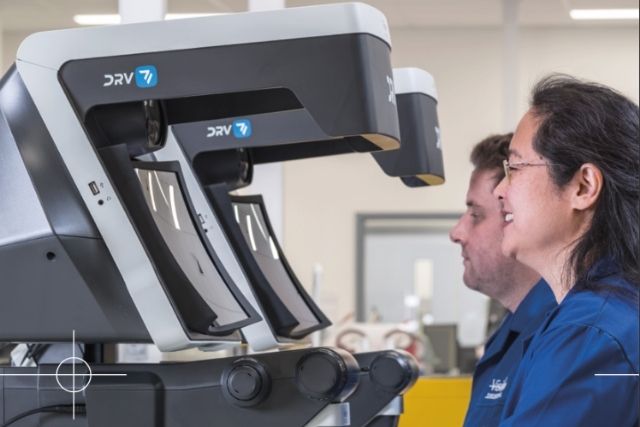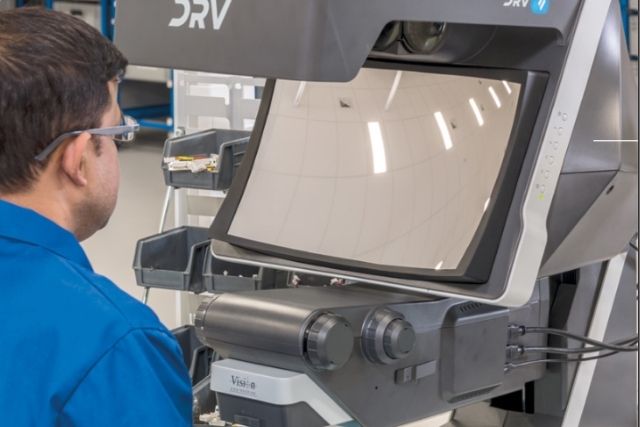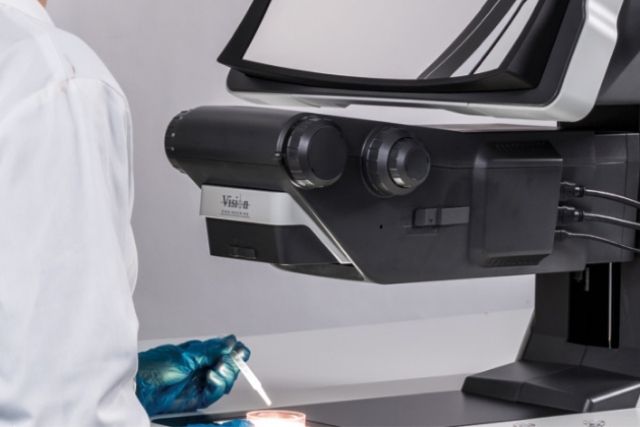
I recently began working with a client who has developed a range of 3D stereo microscopes that can offer a full three-dimensional surface view of items at up to 700 times magnification.
Having spent the past several months taking time to research and understand it myself, I’ve been amazed at some of the potential applications for this fledgling technology. In particular, my own experience in the food industry, together with the reflections of experts I’ve talked to in the field, tells me that this could truly be a game-changing technology for R&D, NPD and Quality Control in the entire food production sector.
Why are microscopes important for the food industry?
Typical 2D microscopes are already used in the food industry, to a limited extent, for a number of different applications. For instance, food testing with digital microscopes lets companies understand the structure of ingredients and raw materials in food. Microscopes are also currently used to study the machinery and packaging materials used to make and package food products. Digital microscopes can also be used for looking at contaminants and forensics in food and microbiology.
What is special about a 3D stereo microscope?

A 3D stereo microscope allows the user to see a fully 3D view of whatever specimen is being examined. It essentially lifts the image up and allows scientists to get a full picture of what is happening with the food item, ingredient, contaminant or food package in a variety of situations. This gives laboratories, central R&D, NPD or Quality / Technical in food manufacturers a vital extra layer of detail to inform their food production and packaging choices, and can even lead to innovative methods of food testing.
The uses for 3D microscopes in the food industry encompass quality control, research and development and new product development. Applications could include:
Contaminants
The tracing of contaminants is one major use of this new food testing technology. For instance, a 3D digital microscope can be used to see glass contaminants within foodstuffs – including the full size, shape and texture of the glass, and how much of it there is contaminating the product. It helps problem solving and sourcing of the contamination risk.
Infestation
3D stereo microscopy can also be used to identify insect infestations in food batches. By more accurately being able to identify the type of insects present in three dimensions in the food, it can also lead to finding the source of the infestation and establishing new processes to safeguard against it. In that sense, digital 3D microscopes are an exciting new food quality control technology that can help ensure manufacturers’ plants fully comply with industry regulations.
Surface defects
Stereo microscopes also present an innovative method of food testing for surface defects and structural changes. For instance, if a food processing plant is producing spray-dried powders, it would be possible to look at particles and see if they are coagulating in some manner with storage or over time. You might also be able to take a cornflake or crisp, for instance, and see how any flavouring you add adheres to the surface. Is it evenly distributed? Is it smoother or lumpier than intended? The same goes for spotting bubbles in products and knowing how big they are and whether they’re over a recommended size or amount. These aspects can all affect food texture and taste, so the greater understanding 3D microscopes can bring can allow food makers to refine their methods and produce the highest-quality products possible.
Packaging impacts
Another of the important uses for 3D microscopes in the food industry can be to improve packaging, both in terms of materials used and the manufacturing processes that create it. I’ve previously explored how the look and feel of packaging plays an integral role in bringing a new food product to market, but it’s also worth noting how packaging plays a crucial role in protecting foods during shipping, storage and displaying on shop shelves. 3D microscopes can pick up on defects in packaging that could determine shelf life and similar.
Where could 3D stereo microscopes fit into the food production chain?
So, having looked at uses for 3D microscopes in the food industry, the next important question is: where might it fit into your food business? There are a few options:
In-house labs

If your company runs its own R&D testing or quality control lab, a digital or 3D stereo microscope could be a valuable addition, allowing you to innovate in-house and develop new foods, new flavour-binding methods, increasingly efficient packaging options, and more.
However, the cost of this new food testing technology means 3D microscopes may be more well-suited to the following two options…
R&D centres
If you run an R&D lab that works with food manufacturers, or have an in-house centralised lab, you may find it beneficial to invest in 3D digital stereo microscope technology. Likewise, if your food business is seeking R&D partners to help them innovate on all aspects of food production, new product development and/or quality control, choosing an R&D centre that is already considering uses for 3D microscopes in the food industry will allow you access to a truly game-changing technology that could inform your future product range.
Outsourced to universities and similar scientific organisations
Lastly, some universities, Food Science departments, and other educational establishments work with major food brands on aspects of food production, sustainability and preservation. If you’re involved with one, you may find significant benefits from this fledgling new food quality control technology.
Are you looking to innovate within your food business?
So that’s my quick look at 3D stereo microscopy and how it could change your food business forever. It really is a potential game-changer especially when combined with AI and clever software. And the fascinating part is that new complementary technologies are being developed for it as we speak. The extra data that 3D microscopes allow food businesses will also necessitate the development of new algorithms and new artificial intelligence applications, helping to push the food industry forward into a new era of innovation and safety.
If you’ve read this piece and are curious about the potential benefits that a 3D stereo microscope could bring to your food business, please do get in contact. I’ll be happy to talk you through it in more detail, and even put you in touch with the people behind the technology itself.
